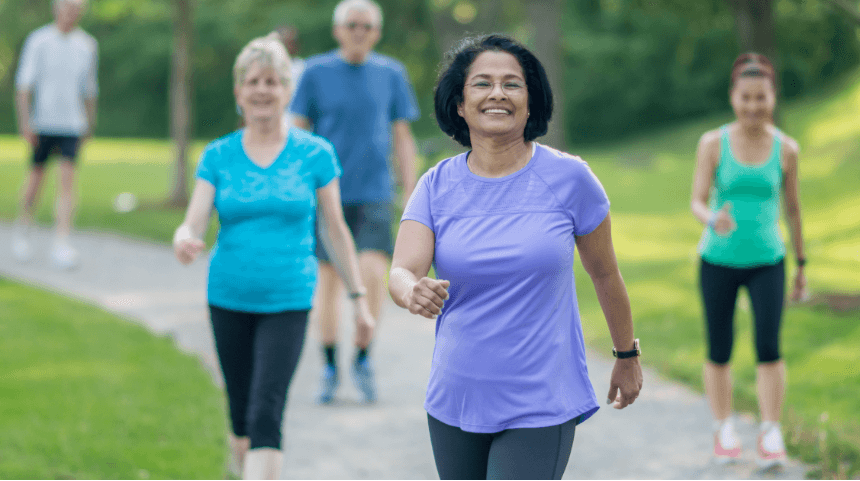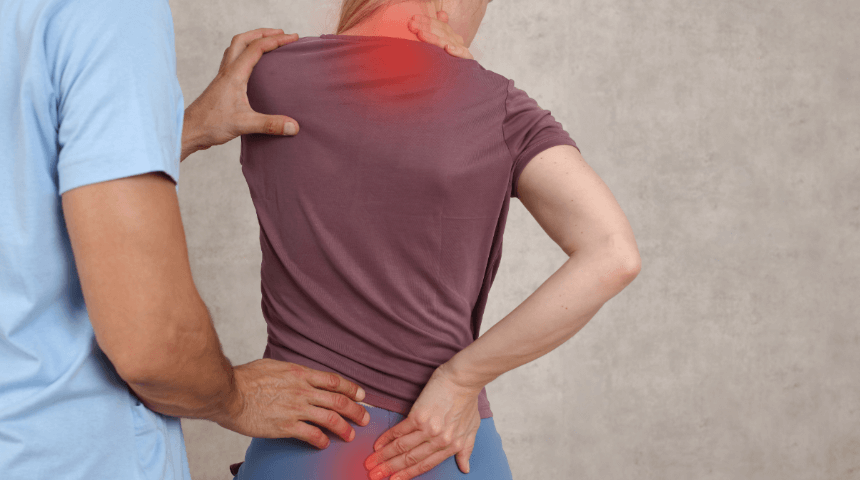Best Exercises To Slow Osteoporosis
Exercise can help slow osteoporosis. But before you start working out, it helps to know which bone-strengthening exercises deliver the greatest benefit.
Osteoporosis — bone-density loss — affects one in three women older than 50, and one in five men will experience osteoporotic fractures in their lifetimes.
Osteoporosis slowly weakens your bones to the point where they easily break. It’s referred to as a “silent disease” because you often don’t know it’s happening until you break a bone. Osteoporosis commonly causes fractures in the hip, spine and wrist.
Why We Lose Bone Mass
As a living tissue, bones continually rebuild themselves to maintain strength. How? Your body breaks down existing bone and then restores it with new bone tissue.
It also helps to understand “the bone turnover cycle.” When you’re young, you build more bone than you lose. But as you age, you start to lose more bone than you build.
For women, bone loss increases after menopause as they lose hormones, causing a precipitous decline in bone mineral density. For men, especially those with low testosterone, osteoporosis usually happens a bit later — generally around age 65 or 70.
The development of osteoporosis is accelerated during this natural aging process and causes the bones to become thinner, more brittle and subject to breaks during a fall.
Besides age, other risk factors for osteoporosis include some medical conditions and lifestyle choices, including:
-
Endocrine disorders, such as diabetes and thyroid diseases
-
Inflammatory disorders such as Crohn’s disease and rheumatoid arthritis
-
Drinking a lot of caffeine or eating a lot of salt
-
Having three or more alcoholic drinks daily
-
Consuming a diet low in calcium
How Exercise Helps Bones
Exercise can help. That’s why it's so important — especially when you're younger — to increase your peak bone mass and make sure you get your bones as strong as you can be before the decline begins. As you get older, exercise helps maintain bone density and decrease bone loss.
Best Exercises for Slowing Osteoporosis
Exercise provides a strong foundation for maintaining bone health. The best types of bone-strengthening exercises that help slow osteoporosis include:
Weight-bearing exercise. Low- or high-impact, moving your body in an upright position against gravity, such as:
-
Walking
-
Jogging
-
Stair climbing
-
Dancing
-
Tennis
-
Jumping rope
Resistance training. Building up muscle, with activities pulling and pushing against the muscle and providing resistance against the bones, such as:
-
Using resistance bands
-
Lifting light weights with both upper body and lower body.
-
Lifting your own body weight (calisthenics).
Balance exercise. Increases balance to prevent falls and improve posture, such as:
-
Tai Chi
-
Yoga
-
Pilates
-
Standing on one leg
-
Standing up from a seating position
-
Toe raises
-
Knee curls
Be careful to avoid activities that can stress your spine, such as bending at the waist or twisting (such as during a golf swing or some yoga poses).
The best advice? Exercise carefully and listen to your body. If you're just trying to combat normal aging and bone loss or if you have low bone density, your efforts will be different versus if you have significant bone loss.
If you are at risk of a fracture, check with a trained professional such as a physical therapist. They can make sure you're doing safe, weight-bearing exercises and not putting yourself at increased risk of fracture.
Lifestyle Changes Can Help
In addition to exercise, you can prevent and lesson osteoporosis symptoms and risks with these lifestyle habits:
-
Eat healthy, nutritious foods, including a balanced diet of fresh fruits, vegetables and whole grains.
-
Consume plenty of foods and beverages rich in calcium and Vitamin D, including low-fat dairy (milk, yogurt, cheese), spinach, kale, fortified orange juice, almond milk and cereals; fish rich in omega-3 fatty acids (mackerel, canned sardines, and salmon); soybeans and tofu.
-
Don’t smoke. If you do, quit.
-
Limit caffeine and salt consumption.
-
Limit alcohol consumption.
Choose to Stay in Touch
Sign up to receive the latest health news and trends, wellness & prevention tips, and much more from Orlando Health.
Sign Up





